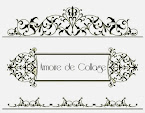
Prior to the use of cufflinks, men’s ruffled wristbands were fastened with cuff ribbons or ‘cuff strings’ as they were called. The inconvenience of trying to tie the ribbons gave way to buttons, and at the high end…jeweled studs or gold links appropriately called “cuff links.” Cufflinks were designed for use with shirts that had buttonholes on both sides of the cuff, but no buttons. Referred to as “French" cuffs as popularized by the 16th century French court, they can be worn pinched together (‘kissing’), or with one cuff overlapping the other, ‘barrel’ style.
The practice of wearing cufflinks became widespread during the 19th century. Imitation gems, and gold and silver-plate with base metal alloys, were employed by jewelers to make cufflinks affordable to the masses. By the late Victorian period, cufflinks and shirt studs were essential to every gentleman’s wardrobe. Manufacturers like Swank, Anson, and Hickok, mass-produced inexpensive cufflinks from the 1930s through the 1960s. The industry diminished in the 1960s and 1970s, as a result of the counter-culture movement and the popularity of the casual button-down shirt. But everything is cyclical and the return of the ‘French-cuffed’ shirt is now, not just delimited to men. Women are buying flamboyant cufflinks for the ‘French-cuffed’ blouses in their wardrobes, and their jewelry wardrobes as well.
Cufflink designs vary widely in style. "Dumbbell" style cufflinks are the simplest design, popular during the early-20th century, but evolved to short connecting posts with the visible side enlarged and more decorative; often suitable for monogramming. The next evolutionary design was a swivel mechanism, referred to as the ‘T-post’ or ‘flip hinge,’ which became one of the most popular concepts. A post with a swivel mechanism held the cuffs together by ‘swiveling’ perpendicular to the post after being threaded through the button holes. Often the swivel style includes a decorative mesh wrap that embellishes the cuff.
There are numerous styles which include traditional, novelty, and humorous cufflinks, and those designed as wearable art, as in the 1950s, when contemporary, enameled designs were applied to copper. Pictured at right are examples of ‘bling’ cuff links that would be classified as ‘unisex.’ local minister purchases these bling things. He explained, “I want my congregation’s attention when I’m giving my sermon. When I wear flamboyant cufflinks, they’re riveted on my message.” Likewise, magicians typically wear dazzling cufflinks as the audience is less likely to detect the trick behind the ‘slight of hand.’
With both college graduations and Father’s Day approaching, a smart pair of cufflinks with a monogram or reflecting a career path (pictured to the left), would make a very appropriate and welcomed gift.



No comments:
Post a Comment